
Where Are The Dutch Vikings?
01 Mar Where Are The Dutch Vikings?
Dutch Vikings
The world may not know much about Vikings, but it hasn’t stopped us from speculating about them. We do know that they were seafaring people who originated from Europe and were the first people from the continent to reach North America. They were expert sailors who traveled as far as North Africa, the Middle East, and the Mediterranean.
However, the world does not know much about the descendants of the Vikings. Questions like were there Dutch Vikings and which country in Europe has Viking descendants are still being asked by students of history. Although it is impossible to know where every last descendant of the Vikings is, we can conduct some studies to learn more about the genetic makeup of the population of different countries. France, Spain, and Italy remained relatively safe from the raids of the Vikings. But England and its islands became a popular spot for Viking settlements.
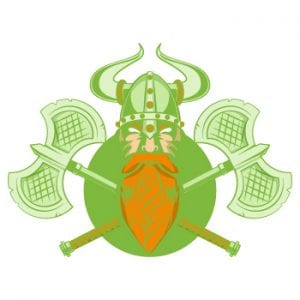
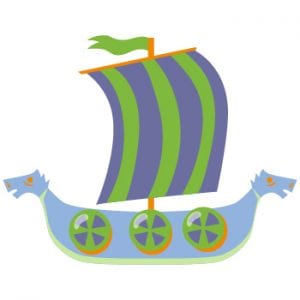
The Netherlands:
The Netherlands, commonly known as Holland, is a country in Western Europe and the Caribbean. In the old times, the Netherlands was known as Frisia. It borders Germany, Belgium, and the North Sea. It also shares its maritime borders through the North Sea with England, Germany, and Belgium. There are twelve provinces of the Netherlands in Europe. Amsterdam is the nominal capital of the Netherlands, whereas The Hague holds the seat of the Supreme Court and the Cabinet. Amsterdam is also the most populous city in the country. The museums and parks of Amsterdam bring millions of tourists to the Netherlands every year. Rotterdam is another important city in the Netherlands. Its port is the busiest in all of Europe.
The Language Dutch
The official language of the Netherlands is Dutch. It is also spoken in the Flanders, in Belgium. In Flemish cities, other languages are also spoken by the locals. West Frisian is a secondary official language in the province of Friesland in the Netherlands. In the Caribbean Netherlands, English and Papiamento act as secondary official languages. Afrikaans is the daughter language of Dutch and is one of the official languages of South Africa. It was brought to South Africa by Dutch settlers during the 18th century.
For centuries, the Netherlands remained under foreign control. At first, it was the barbaric Germanic tribes that ruled over Frisia, and then came the Romans. France and Spain also ruled over Frisia for different periods of time. Once the Dutch got their independence, they started working on improving their country. But during World War II, the Netherlands came under attack from Germany.
Germany and World War II
Germany executed the Jews in Holland and destroyed the infrastructure of the country. Since the end of the war, the people of the Netherlands have worked hard to make their country successful. This is why it is one of the most economically powerful countries in the world today. The Netherlands is also one of the happiest countries, not only in Europe but in the whole world. The Netherlands is a constitutional monarchy where the Royal Family is loved by all the citizens. The members of the Royal Family helped the people of Holland win control over their homeland throughout the centuries.
Netherlands, North Sea and Zeeland
The Netherlands, the North Sea, and Zeeland have seen human movement for centuries. The source of this information is the archaeological remains of Neanderthal that were located on the North Sea floor off the coast of Zeeland. The Netherlands of today is not the same as it is when it was known as Frisia. It has made efforts to achieve peace and stability. There are no land development issues caused by corruption. A sister does not have to worry about the safety of her brother. The heads of companies are motivated to work with passion and treat everyone equally. People don’t have to turn to Belgium, Germany, France, or Sweden to find a good job. They can easily find one in the Netherlands and get paid well. They can work and live in Amsterdam and get to enjoy the city’s beauty every day.
The Vikings:
Vikings were people from southern Scandinavia (modern-day Sweden, Denmark, and Norway) who raided, pirated and settled throughout parts of Europe from the late 8th to late 11th centuries. They were the ones who first explored Greenland and Iceland. The impact of the Vikings on Europe can be observed even today. There are conflicting stories of the centuries when Vikings were raiding different parts of Europe. In truth, Vikings were much more than their raids and pirating. Their women enjoyed more freedom than the women of England and Spain in the 17th century. The farming cultures of the Vikings also influenced the people of Europe all over.
Almost all the towns and villages raided by the Vikings were located by a river. Because the Vikings were excellent navigators, they could travel in their longships through every river easily. For the Vikings getting control over cities was not the ultimate goal. They traveled to different parts of Europe because they valued their family life and wanted to provide for their family members.
The Vikings went as far as Russia and Iran. They established settlements on different islands. They not only came into contact with local nations but also married native people. This is why the ancestry of the people of Europe is mixed. One speculation is that the Vikings went extinct because they didn’t marry out of their communities. But that has been proven wrong thanks to modern technology.
Vikings have had a huge influence on the languages of Europe. North Germanic languages, also known as Scandinavian languages, are the descendants of the Old Norse, which was the vernacular of the Vikings. The modern-day languages of Denmark, Germany, Norway, Sweden, Spain, Italy, and England have either been directly or indirectly influenced by Old Norse.
There are a lot of misconceptions about Vikings. People think their attacks were not well-coordinated, or the fathers did not care about their children. On the contrary, the attacks of the Vikings were well coordinated. Fathers and mothers took care of their children together. Family life was very important to the Vikings.
The Vikings had their own religion and murdered priests in certain regions. But later, they became Christians. The factor that played a role in this is hard to point out.
Modern-Day Vikings:
In order to trace the lineage of European populations to the 18th centuries and beyond, researchers have conducted numerous studies. Scandinavians—hailing from Denmark, Norway, and Sweden—have been extensively verified to possess Viking ancestry. Yet, owing to intermarriage, England also boasts descendants of these seafaring warriors. This substantiates the notion that Vikings established matrimonial ties with local families during their settlements in England. Notably, various cities in England, Scotland, and Ireland exhibit a notable proportion of individuals carrying Viking lineage.
However, the ancestral connections of people from France, Belgium, Germany, Spain, and Italy are subject to scrutiny. It’s acknowledged that specific regions in Europe were less susceptible to Viking invasions, compelling these seafarers to explore routes toward southern and northern territories, including other continents. TheWayback Machine, in this context, could potentially unearth historical data shedding light on Viking interactions with these European populations.
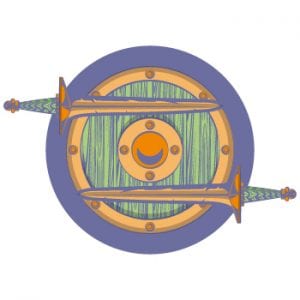
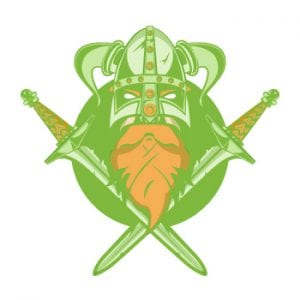
Were There Dutch Vikings?
Before the Netherlands was the Netherlands or even Holland, it was known as Frisia. According to Historians, Vikings came to Frisia in the 9th century. They established control over all of Frisia. They conducted raids in cities and towns by the rivers. The Viking rule over Frisia did not last for months but for years. It wasn’t until the local noblemen of Frisia started their resistance against the Vikings that things began to change. But there is nothing to suggest that all the Vikings left the Netherlands.
When they began their raids on Frisia, many Viking teams established their settlements in different cities. They learned local cultures and began to live peacefully. So, it can be said that the Vikings may have influenced the Dutch culture the way they influenced Germanic cultures through their beliefs and ideas. There were different types of raids under the Vikings. Some focused on the largest cities of Frisia for trade, while others targeted major cities for their settlements. The latter group did not want control over the cities of Frisia and just want to live with their family in a peaceful environment. In Frisia, the first group disappeared after the locals rebelled. But the majority of Vikings who wanted to settle down stayed behind.
Although it is impossible to know the origins of everyone in the Netherlands, it can be speculated that some of them have Viking blood so this is a Dutch Viking. One thing is for certain, people with Viking ancestry do live in different parts of Europe. If they move to France or Spain from England or Denmark, that won’t change their genetic makeup.
Dutch Population
It is impossible to know the genetic makeup of the people living in all provinces of the Netherlands. We also cannot test all the people of Amsterdam. A study of this scale can not be conducted. However, more than twenty percent of the population can be tested. The Netherlands is not the first country in Europe you think of when someone mentions Vikings. It is Denmark, Sweden, and Norway that is located in northern Europe and share the closest ties to the Vikings and maybe to the Dutch Vikings. However, the Vikings did settle down in different regions, including the Netherlands, so it should be of no surprise to anyone if there are any Viking descendants in Frisia so the Dutch Vikings.
The Influence of European Countries on Dutch Culture:
France, Spain, and Germanic tribes held dominion over Frisia in the 9th century. However, the 11th century marked a turning point as the people of Frisia gradually asserted control over their own territory. With the expulsion of France, Spain, and the tribes, the Netherlands found an opportunity to foster its independent growth. Despite the proximity of Norway, Germany, Spain, and France—European nations with amicable relations—their influence on Dutch culture waned.
Within modern-day Frisia, Amsterdam stands as a vibrant hub, yet it’s not the sole city pulsating with life. Each Dutch city, whether in North or South Holland, weaves its unique narrative. Attempting to encapsulate the essence of Amsterdam or the entirety of North Holland within a single article proves inadequate. To truly understand the Netherlands, one must embark on a personal exploration of North and South Holland, immersing themselves in the spirit of Frisia firsthand.
The culture of the Netherlands spans centuries, deeply rooted in its historical connections, such as the presence of Danish Vikings and the Gokstad Viking Ship. Elements from the 17th century Dutch society still resonate in modern times. The Frisian language, though not dominant, echoes its influence. Despite the common misconception perpetuated by popular culture, horned helmets were not characteristic of Viking attire.
To delve deeper into the historical tapestry and cultural fabric of the Netherlands, resources like the University Press publications—be it Cambridge University Press, Oxford University Press, or Amsterdam University Press—serve as invaluable guides. However, nothing compares to experiencing Dutch culture firsthand, engaging in events that showcase its rich heritage and vibrant traditions.
Frisia
Whether we are discussing North Netherlands or South Netherlands, we cannot overlook the influence of neighboring Frisia during the 10th centuries. Belgium and Germany, with their own distinct archaeological cultures, have significantly impacted the Netherlands. Despite each Dutch city, including Amsterdam, boasting its unique identity, remnants of Belgian and German heritage pervade their essence. Nonetheless, immersing oneself in the culture of Amsterdam and the Netherlands through personal visits remains the optimal approach. Exploring these locales allows one to grasp the intertwined histories of North America, the Viking World, and the Jorvik Viking Centre, shedding light on the archaeological insights provided by institutions like the Archaeological Institute of America, often elucidated by scholars such as Gareth Williams. Moreover, these experiences contribute to understanding the formation of national identities across regions, including the influence of historical figures like Charles the Bald. Engaging with the Frisian language and delving into the archives of the Wayback Machine may unravel hidden connections between these societies. Engaging in cross-country journeys, visitors can witness how the 10th centuries have shaped not only the Netherlands but also its neighboring lands of Belgium and Germany. Remarkably, a lingua franca, such as English, facilitates communication across these regions, taught comprehensively in primary schools throughout the Netherlands, France, Belgium, and Germany, bridging cultural boundaries and enhancing cross-cultural interactions.
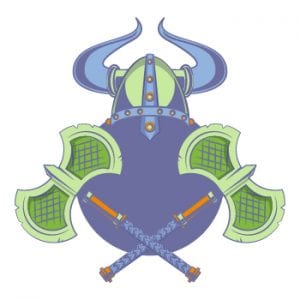
Dutch Identity & Scandinavian Influence
The Dutch people, with their rich history dating back to the 8th century, have developed a distinct identity deeply intertwined with the Dutch language. This language, evolving significantly since its earliest forms, shares historical ties with Scandinavian people, reflecting the intermingling of cultures and languages across Europe. By the thirteenth century, the Dutch government and society had begun to take shape, further cementing the Dutch language’s role in defining national identity. Publications by esteemed institutions like Cornell University Press have explored these connections, shedding light on the mutual influences between Dutch and Scandinavian culture. Moreover, resources such as the Wayback Machine and BBC archives provide valuable insights into the historical evolution of these interactions, offering a window into the past that reveals the complexities of cultural and linguistic development in Northern Europe.
The Evolution of Dutch Society
In the 17th century, the Dutch people experienced a golden age of commerce and art, significantly influenced by their strategic position along the North Sea. Originating from Germanic tribes, their history is marked by notable figures such as Charles the Bald and later, William III, who played pivotal roles in shaping the Netherlands’ destiny.
Cornell University Press has documented this rich heritage, highlighting the evolution of Dutch society from the 16th century’s tumultuous times through the artistic and cultural flourishing of the 17th century, and into the transformative changes of the 19th century. This period saw the Netherlands emerge as a hub of popular culture and intellectual thought, deeply rooted in the legacy of their Germanic origins and navigational prowess, which positioned them as a significant European power.
In the 7th century, the foundations of what would become the Dutch people and their national identities began to form amidst the shifting dynamics of Europe’s territories. Figures such as William I, William II, William IV, and William V played instrumental roles across different epochs in shaping the trajectory of the Dutch realms. This era, marked by the presence and influence of Danish Vikings, saw the interaction between the emerging Dutch identity and the Scandinavian warriors. The Danish Vikings, known for their seafaring prowess and raids across Europe, undoubtedly left an imprint on the cultural and social fabric of the Dutch, contributing to the rich tapestry of history that defines the Netherlands.
These interactions, characterized by both conflict and cultural exchange, played a significant role in molding the Dutch identity, a blend of indigenous development and external influences, including the formidable presence of the Vikings.
Frequently Asked Questions
Were there Vikings in the Netherlands?
Yes, the Vikings did reach the Netherlands during their expeditions in the early medieval period. They were known for raiding, trading, and sometimes settling in various parts of Europe, including the coastal areas of the Netherlands.
What impact did the Vikings have on the Dutch regions?
The Vikings impacted the Dutch regions through raids and trade, which influenced the local economy and society. Their presence also led to cultural exchanges and contributed to the development of trade networks in the Low Countries.
Did the Vikings establish any settlements in the Netherlands?
While the Vikings are mainly known for their raids in the Netherlands, they also established temporary camps and may have had settlements, particularly in areas conducive to trade and strategic for their seafaring activities.
How did the Dutch respond to Viking invasions?
The Dutch, like other European communities, responded to Viking invasions with a mix of resistance and adaptation. Over time, as the Vikings shifted from raiders to traders and settlers, relationships between the Vikings and the local Dutch populations evolved, leading to integration and mutual influence.
Are there any historical sites or artifacts in the Netherlands related to the Vikings?
Yes, there are historical sites and artifacts in the Netherlands that are related to the Viking presence, including Viking burial sites, weapons, and jewelry found during archaeological excavations. These findings help researchers understand the extent of Viking activity and influence in the region.

